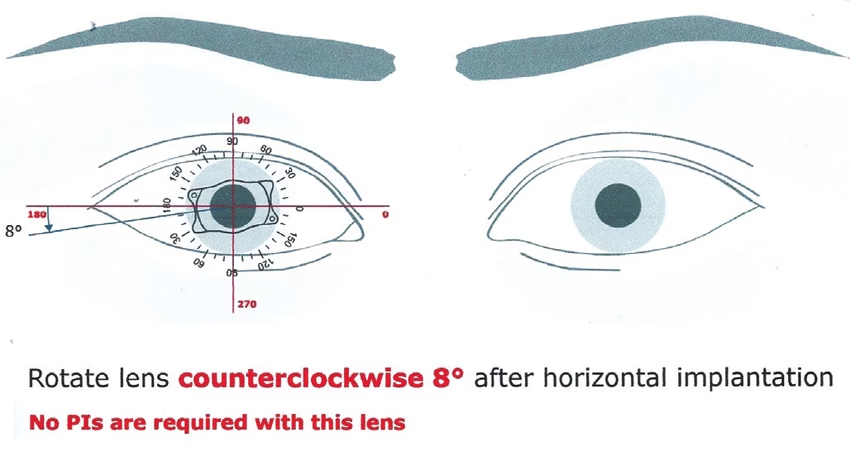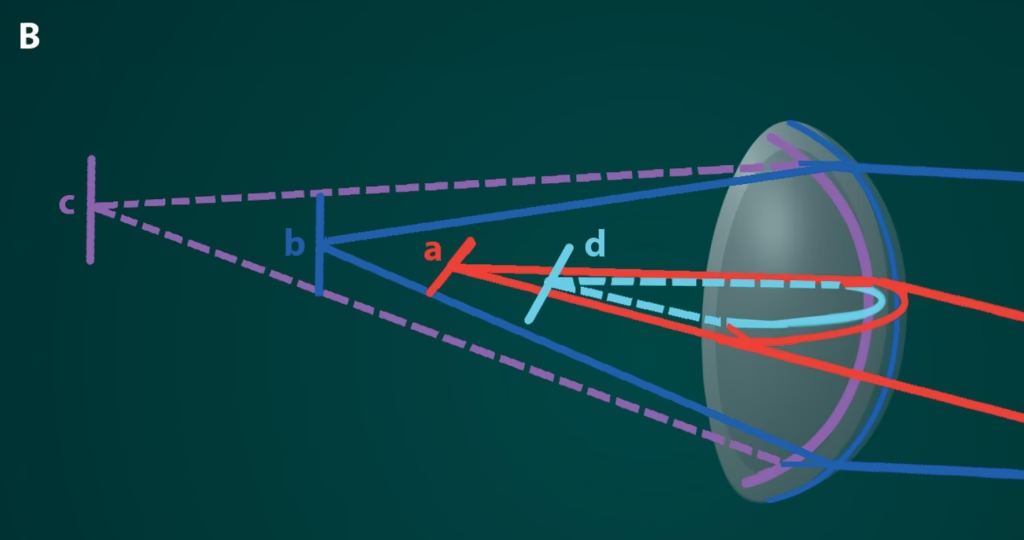Avoid pitfalls in toric IOL calculation like ignoring PCA or SIA. Tips to use the Barrett Toric Lens Calculator for error-free surgical planning.
Table of Contents
Let’s talk about a game-changer in cataract surgery: toric IOLs. These special lenses can fix astigmatism at the same time. But even small errors can lead to blurry results. New data from 2024-2025 shows that using smart tools like the Barrett Toric Calculator can boost your success rate to nearly 80%.
This guide will walk you through the common slip-ups and how to fix them. Get ready to learn how to give your patients the clear, glasses-free vision they want.
What Are Toric IOLs?
First, the basics. Unlike standard lenses, toric IOLs have different powers in different areas. They are designed to correct an irregularly shaped cornea. They must be placed in the exact right position to work well.
When done right, studies show 86% of eyes end up with almost no astigmatism. But mistakes can happen at every step.
Top Calculation Mistakes and How to Avoid Them
The planning stage is where many problems start. A wrong calculation means the lens power is off.
Don’t Forget the Back of the Eye
A huge mistake is ignoring the back surface of the cornea (Posterior Corneal Astigmatism, or PCA). Standard measurements only look at the front. But the back part adds its own curve, usually making vision a bit more “against-the-rule.”

New research says ignoring this causes errors in 20-30% of cases.
The fix: Use devices that measure the entire cornea. Or, use a formula that predicts PCA for you. Tools like the Barrett Toric Calculator do this automatically, which can seriously improve your outcomes.
Your Incision Changes Things
The cut you make to do the surgery also changes the astigmatism. This is called Surgically Induced Astigmatism (SIA). Using a general guess for SIA instead of your own personal number is a common error.
For example, a cut on the side of the eye causes less change than one on the top.
The fix: Figure out your own average SIA from your past surgeries. Always adjust your plan based on where you make your incision.
Bad Measurements Lead to Bad Results
Small errors in measuring the eye’s length can lead to big vision problems. A tiny error of 0.1 mm can cause a 0.3 D shift in the final result. The depth of the front part of the eye also matters.
The fix: Use the best optical tools for measurement. Always double-check your numbers. New swept-source OCT devices are the most accurate.

Surgery-Day Slip-Ups
A perfect plan is useless if the surgery isn’t precise.
Marking the Wrong Spot
Marking the eye for the lens axis is critical. If the patient’s head is tilted or the ink fades, your marks will be off. Just a 10-degree error cuts the lens’s power in half.
The fix: Use digital marking systems or tools inside the operating room to find the true axis.
The Lens Tiltes or Shifts
If the lens bag isn’t perfect, the new lens can tilt or sit off-center. This can cause blurry vision.
The fix: Make a clean, strong lens capsule opening. Pick IOL models known for their stability inside the eye.
Problems After Surgery
The work isn’t over when the surgery is done. The lens can sometimes rotate in the days after.
Why Lenses Rotate
The eye’s natural healing can make the lens capsule shrink and twist the IOL. Newer lenses are very stable, but it still happens in a small number of cases.
What to Do If It Rotates
Less than 1% of patients need the lens moved. Check the eye at one week and one month. If the lens has turned more than 5 degrees, you may need to go back in to reposition it.
Your Secret Weapon: The Barrett Toric Calculator
How do you avoid all these pitfalls? Use a tool that handles the tricky parts for you. The Barrett Calculator is a leader because it bakes PCA and SIA right into its formula.
Data from 2025 shows it gets results right for 78% of eyes. It’s simply one of the best tools for the job.
Tips for using it well:
- Put in perfect measurement data.
- Let it use a “predicted PCA” if you can’t measure it directly.
- Always use your own personal SIA number.

Real-World Success Stories
Recent studies prove that when you avoid these errors, the outcomes are fantastic.
- 86% of patients have almost no astigmatism left over.
- Modern lenses are very stable.
- These lenses work well even in more challenging eyes.
Key Takeaways for Flawless Results
Here is your action plan:
- Before Surgery: Measure the whole cornea. Use an advanced calculator.
- During Surgery: Use digital guides for perfect lens placement.
- After Surgery: Check for rotation early on.
Make a checklist: Verify your numbers twice, run the plan with the Barrett Calculator, and track your results to keep getting better.
The Bottom Line
Toric IOLs are amazing. They can give patients freedom from glasses. But to get there, you must sidestep the common errors. Focus on the back cornea, your surgical cut, and perfect alignment. Using a powerful planner is your best bet for a happy patient.
Ready to perfect your technique? Start by mastering a tool like the Barrett Toric Calculator. Your patients will see the difference.

